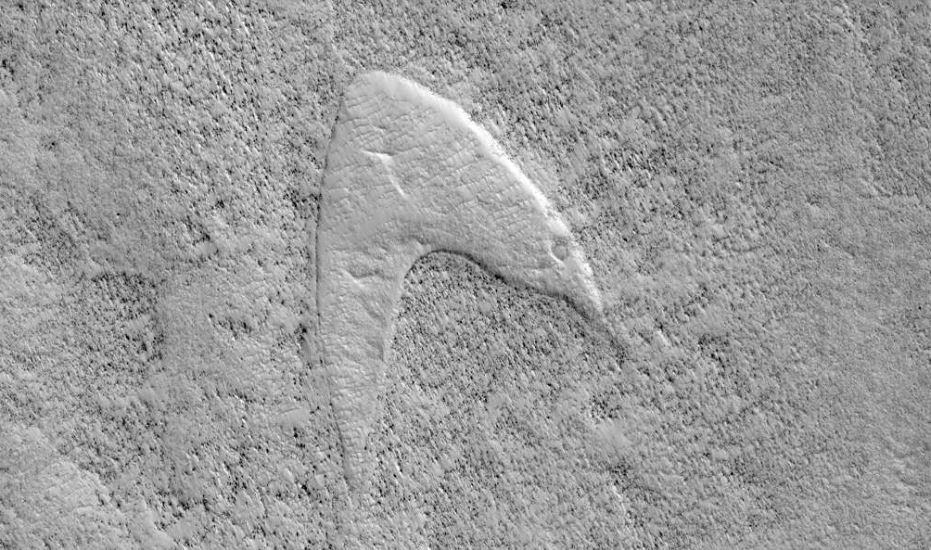Forget about the face on Mars or its pyramid!
The most evocative thing yet discovered on the surface of the Red Planet is the Starfleet emblem from the fictional universe of Star Trek.

And that’s not a genius marketing ploy. But now, let’s talk science!
The chevron shape and many other similar shapes are found in Hellas Planitia, the plain located in the huge circular crater in the southern hemisphere of Mars.
The formation of the emblem was possible thanks to three key elements: sand, lava, and wind.
Essentially, we are looking at the imprint of ancient sand dunes. Planetary scientists believe that these dunes are similar to the barchan dunes found on Earth. They are crescent-shaped and are moved by the wind.
Enter, lava.
Long ago, Mars was volcanically active and researchers think that as lava flowed over the basin floor it encountered these dunes. It couldn’t go over them, so it moved around them. In doing so, it marked their position and when the wind slowly moved them, an imprint of their original shape remained.

Star Trek has probably played a role in the lives of many people involved in astronomy so it’s perhaps unsurprising that the chevron formation reminds them of the emblem.
Star Trek characters have even been immortalized by the names of features on Charon, Pluto’s largest moon. In a region called Vulcan Planum, named after the planet in Star Trek, you can find the Kirk crater, the Spock crater, the Uhura Crater, and the Sulu crater, all named after characters from the original series.
The picture was taken by the HiRISE instrument onboard the Mars Reconnaissance Orbiter (MRO). The spacecraft has been orbiting Mars for almost 14 years and has studied and photographed the Red Planet in exquisite detail.
This Star Trek logo is just the latest in a long catalog of excellent photographs. And means probably more for a few of us…
[Space, IFL Science]











